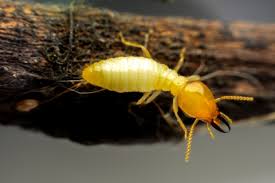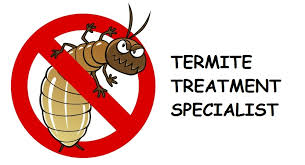Examine This Report about Termite Control Procedure
Mud tubesUnlike ants, termites do not ramble around on the soil surface or outside in the open. They will either tunnel through the soil or into wood (or other stuff ) or else travel inside pencil-size (or bigger )"mud tubes" they assemble from soil, wood contaminants and other materials. You'll find these tubes on foundation walls, floor joists or other areas of the home.

Tubes that are found on ceilings or on top levels of a building may indicate you have an aboveground ("airborne") infestation, i.e., the termite colony actually lives in the building and the termites are traveling up from the soil. Mud tubes constructed through an aboveground colony usually contain materials other than dirt, e.g., wood and sheet rock or whatever the termites are feeding on.

How Termite Control Products can Save You Time, Stress, and Money.
In such situations, a thorough inspection may necessitate removal of siding or interior wallboards, etc.. More importantly for you, these aboveground infestations cannot be controlled with the customary soil treatment (see below) and therefore are typically deducted from a termite contract warranty. In such situations, finding and correcting the moisture problem is the very first step to eliminating the termites. .
We tend to think of termites as feeding/injuring timber only. Termites actually feed on virtually anything that contains cellulose, the main component of wood, including wood paneling, paper products, cardboard boxes, art canvases, the newspaper covering of sheet rock, carpeting, etc.. While foraging and feeding, they may tunnel through non-cellulosic substances, such as plastic and foamboard.
How Termite Control Process can Save You Time, Stress, and Money.
In reality, the amount of harm that termites cause depends on many factors. In areas with cold winter temperatures, termite activity (and feeding) often declines, but does not necessarily cease. If the termites are well-protected from colder temperatures (e.g., underneath a slab), then action may continue year-round. From a practical perspective, severe termite damage generally takes approximately 3-8 years. .
There is no accurate method for determining the age of recently found damage. You need some reference point, i.e., some point in time when it was known there was no harm to this particular wood. This can be one reason why annual inspections (and keeping your records of those inspections) are important. .
NOTE: All these inspections are not a guarantee that you do not have termites or harm in areas which are not insured or not readily seen, such as inside walls. On the other hand, the inspections can reveal conditions that may imply that harm does exist and further investigation is needed.
In case you've got a termite protection contract, contact the pest control company quickly and arrange for them to take a look at the issue. Should you not own a termite contract, telephone 2-3 (or more) companies and have each one inspect your home and provide you with the details of their findings and any recommendations for a course of action to check my source correct any termite problems that they found.
The Best Guide To Termite Control Products
Termites do not cause significant damage in a short time period, so spending a couple of extra days or even a couple weeks will not make any real difference in terms how much damage happens. .
Can there be damage that should be repaired or examined by a contractor or engineer before control measures are performed
Only spraying swarmers or the surface of accessible infested wood can kill the termites that you see now, but it does not block the infestation nor does it protect your house from potential attacks by termites. The most common sort of termite treatment involves a"trench and treat" in which a liquid insecticide ("termiticide") is applied to the soil surrounding critical areas of your residence.
All About Termite Control Products
The soil is trenched 6" address deep and approximately 4-6" wide. For houses with crawlspaces, the soil along the interior foundation wall has to be treated within 4 feet of identified signs of termite activity. In some circumstances, the soil around supports (such as piers) underneath the house can also be treated.
When implemented correctly, this treatment creates a continuous chemical barrier that should prevent termites from reaching the foundation and piers in your residence. .
Concrete slabs which attach to the house, as an instance, a garage floor, or the slab of an earth-filled porch.